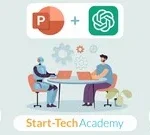Learn DevOps, its concepts, schematic, benefits, application
People who work in the software industry can get a lot of jobs, get a lot of money, get a lot of confidence, and learn a lot.
What you’ll learn
Learn DevOps, its concepts, schematic, benefits, application
- The need for DevOps in IT and software development projects.
- Waterfall and Agile methods have their flaws, but DevOps has evolved to get around them.
- The features, characteristics, and schematics of different tools used in different stages of DevOps
- Benefits of DevOps and how it can be used in IT and software projects.
Requirements
- Knowledge of Information Technology and how to make software.
- With MS Office, like Word and Excel and PowerPoint and animations and so on
- Linux is an operating system.
- Programming languages, like Java, Python, and C Sharp, are used to write code.
Description
The goal of this class is to build a strong foundation in DevOps by giving students a lot of information about everything from basic concepts to how to use tools. Valuable information about Opportunities, Roles & Responsibilities, and Rewards are also talked about.
They are all Information Technology guardians.
Professionals, engineers, entrepreneurs, and designers must see this unique and interesting class as interesting and fun.
The technologists have a good chance of adding DevOps to their resumes and becoming a “successful DevOps Engineer.”
Parents of young people who want to go to college can encourage them to take this class and lay the groundwork for a future DevOps professional.
There is a lot of demand for DevOps experts in the IT and software development industry, as well as in a process technology setting. They each get a very good pay package based on how smart they are.
When you start out, even novices have a good CTC compared to other people.
Anyone who wants to learn more can go through this course and build up a strong knowledge base.
Age-old methods like Waterfall and Agile aren’t good enough for modern IT and software projects. This has led to the rise of DevOps.
People who sign up for this course will learn how to use the integrated approach of Developer and Operator, which combines people’s minds with the most recent advances in process technology.
In this course, you will learn about the 8 main things you need to do when you start working with software: plan, code, build, test, deploy, run, monitor, and integrate.
It also talks about the 5 main things that make a project good, like Continuous Development and Testing, Continuous Deployment, Continuous Monitoring and Continuous Integration.
Help: Schematics make it easier to understand what is going on and how it works.
Opportunities, Jobs, and Responsibilities Rewards give people an idea of how important it is to learn the DevOps method.
Each step in the process of DevOps is made to run itself and connect to the next. Consecutive processes start by themselves.
If DevOps engineers have experience with operating systems like Linux before, they will be able to learn more about them.
Developers who know how to write programs in languages like Python, Java, and C sharp will be more likely to get hired. They are in charge of making codes that work well.
Based on the type of project, the job or the organization’s work or its future plans.
With help from this class, technologists will be able to figure out what their job is in any company.
Opportunities are opening up in app development, web development, health care systems, travel management, insurance advisory, eCommerce platforms, and the financial sector, to name a few.
Good luck to everyone.
Who this course is for:
- The field of engineering in information technology and software development. All these people can benefit from this course: DevOps planners, Python programmers, testers, DevOps Engineers, operators, and monitors are just some of the people who can use this course.
Learn DevOps, its concepts, schematic, benefits, application FreeCourseSites.com
Building SQL Queries with Excel
Download Now









